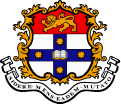
|
University of Sydney
School of Mathematics and Statistics
Applied Mathematics Seminar
Dr Neil Cramer
School of Physics, University of Sydney
The Physics of Dusty Plasmas
Wednesday, 30th August, 2-3pm, Carslaw 173.Charged macroparticles such as dust grains are a common component of laboratory, space and astrophysical plasmas. The presence of these particles causes significant changes to a plasma's behaviour. A gaseous plasma made up of ions, electrons and charged macroparticles is also called a complex plasma, or a colloidal plasma, in analogy with liquid colloidal suspensions. The particulates may range in size from nanometres to micrometres, and are usually negatively charged due to the attachment of some of the background plasma electrons on their surface. An appreciable fraction of the negative charge in an overall neutral plasma may reside on the macroparticles, which are coupled to the ions and electrons in the plasma via electric and magnetic fields. In discharges, charged dust can accumulate in sheath regions where electrostatic forces balance the forces due to gravity, ion drag and gas flow.
Laboratory dusty plasmas are usually strongly coupled, i.e. their interaction energy is greater than their thermal energy. The particles can form themselves into an ordered crystal structure known as a Coulomb crystal, which may provide a macroscopic model for phase transition studies. The theory and experimental results for dusty plasmas are reviewed in this talk.